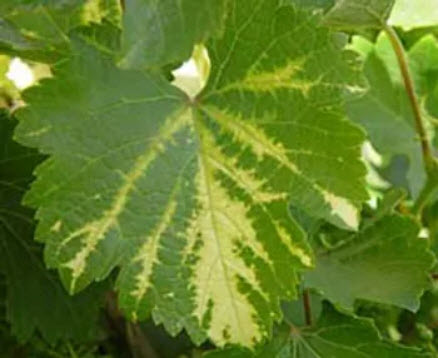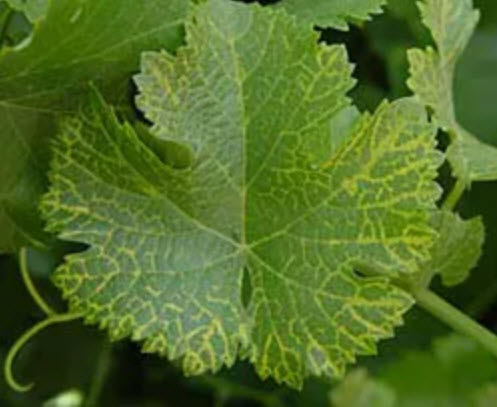Grapevine Fanleaf Disease
Origin: Fanleaf degeneration/decline disease is caused by several different virus species known as nepoviruses. Grapevine fanleaf disease is the most well characterized nepovirus and is by far the most widespread and important cause of the disease worldwide.
Host Range: Within the United States, fanleaf degeneration/decline is widespread in California, but has also been observed in Washington State, Maryland, Pennsylvania, New York, and Missouri.
How it Spreads: Localized spread of the nepoviruses involved in fanleaf degeneration/decline disease occurs largely by dagger nematodes, a microscopic type of worm that feeds on roots. Long distance spread of nepoviruses occurs primarily through movement of infected propagation materials and their subsequent use in propagation and grafting.
Potential Damage: Infected vines exhibit a progressive degeneration or decline, which leads to a shortened productive lifespan of the affected vineyards by reducing yield (up to 80%) and quality, often ending in vine death. Fruit clusters are often smaller and fewer in number, and exhibit irregular ripening and poor berry set.

Photo courtesy of Canadian Food Inspection Agency

Photo courtesy of Canadian Food Inspection Agency

